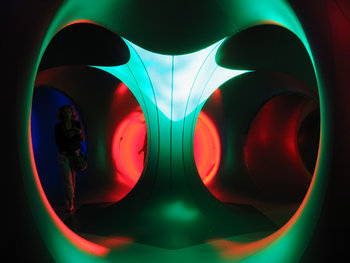
Productivity
A tool, machine or technology that allows firms and individuals to produce far more output for an hour of work. For example, the personal computer dramatically increased the productivity rate of many industries and professions.Efficiency
Efficiency is the output you get for a unit of input. For example, a candle converts 0.04% of its energy to light and a white LED light bulb with phosphorescence color mixing can convert 22% of its energy to light.Usability
Usability is how pleasing things are to use. Where early technologies often require users to conform to the technology, innovation makes interfaces more human with time.Automation
Completely or partially eliminating the labor required to achieve a goal. For example, washing machines made laundry far less labor intensive.Convenience
Beyond labor, making leisure time easier. For example, ecommerce makes shopping easier.Performance
A superior level of performance such as an decision algorithm that makes more accurate and timely decisions than the competition.Cost
Dramatically reducing the cost of something. For example, an energy source that is ubiquitous and inexpensive including environmental costs.Quality
A superior level of quality as perceived by customers.Creative
Innovation can occur in creative fields such as art where a particular artist, work or technique inspires a shift in creative direction across a broad spectrum. In the art world, these are referred to as movements such as the Primitivism movement of the 19th century largely inspired by Paul Gauguin.Experiences
Customer experiences that outdo the competition by a wide margin such as an amusement park that has a feeling to it that customers value.Quality of Life
Innovation in areas such as urban design, transportation, education, public health and community that improve well being. For example, an approach to education in remote communities that reduces poverty and gives young people positive outlets for their energy.Connectedness
Innovations that facilitate social processes such as professional networking.Information
Information tools, repositories and processing. For example, the internet represented an order of magnitude improvement over researching topics at your local library.Intelligence
Decision making and problem solving capabilities.Markets
Creating new two-sided markets or reinventing the economics of an existing market.Risk
Reducing a risk. For example, retractable seat belts made cars far safer beginning in the 1950s.Sustainability
Replacing a process that isn't likely to end well with one that has a future.| Overview: Types of Innovation | ||
Type | ||
Definition | Improving things dramatically all at once. | |
Related Concepts | ||



































